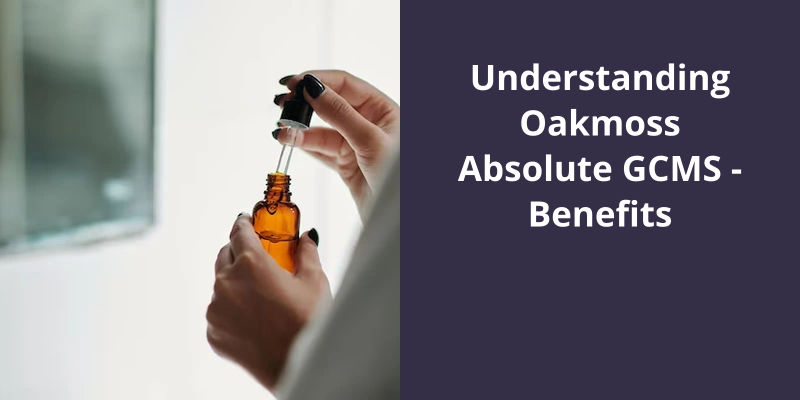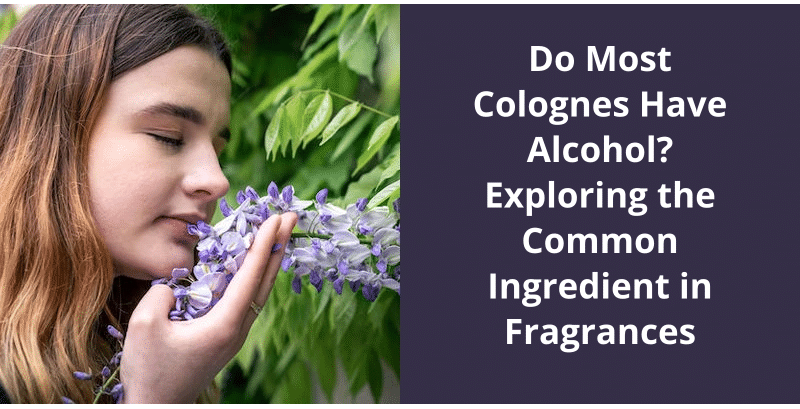Oakmoss absolute GCMS is a popular ingredient in the fragrance industry due to it’s distinctive earthy aroma and fixative properties. It’s extracted from the lichen found on oak trees and typically grown in southern Europe. The GCMS (Gas Chromatography-Mass Spectrometry) analysis of oakmoss absolute allows for determination of the chemical composition of this complex essential oil. Oakmoss absolute GCMS is highly sought-after and valued for it’s authenticity, consistency, and exceptional quality.

How Do You Use Oakmoss Absolute?
The oakmoss absolute is a highly valued material in the world of perfumery because of it’s unique scent composition. The herbaceous and woody aroma of the absolute is highly appreciated in high-class and luxurious fragrances, where the deep earthy tones are required. The oakmoss absolute is extracted from a lichen called Evernia prunastri, and it goes through a long process of extraction to obtain the essence, which is then used in fragrances and other products.
Apart from perfumery, oakmoss absolute is also used in aromatherapy and as a natural remedy for various ailments. The absolute has antiseptic and anti-inflammatory properties, which makes it useful in treating skin irritations, infections, and even minor cuts and bruises. Some people even use the oakmoss absolute as an insect repellant. When diluted with carrier oils, the absolute can also be used as a massage oil to soothe sore muscles and promote relaxation.
Depending on the desired potency, the ratio of oakmoss absolute to carrier oil may vary. It’s important to do a patch test first before applying the blend to the skin to avoid any allergic reactions.
When it comes to natural perfumery, oakmoss absolute is a highly sought after ingredient for it’s concentrated fragrance. However, dissolving oakmoss absolute can be a bit tricky. While it’s soluble in alcohol, it only partially dissolves in fixed oils. In the next section, we will explore some methods for dissolving oakmoss absolute effectively.
How Do You Dissolve Oakmoss Absolute?
The proper dissolution of oakmoss absolute in perfumery is an important step in creating high-quality fragrances. Unfortunately, due to it’s unique composition, it can be quite challenging to dissolve. Oakmoss absolute is derived from a species of lichen and contains a high level of lichen acids, which make it less soluble in both alcohol and oils. This can cause difficulties in blending and result in a less concentrated scent.
To dissolve oakmoss absolute, it’s best to mix it with alcohol. This is because it’s fully soluble in alcohol and can easily blend into a concentrate. However, it should be noted that oakmoss absolute is sensitive to heat, and prolonged exposure to high temperatures can cause it to lose it’s aromatic properties. Therefore, it’s important to monitor the mixtures temperature closely and not overheat it.
It’s recommended to gently heat both the carrier oil and oakmoss absolute separately before combining them. This allows them to blend together more easily and creates a smoother fragrance profile.
For example, if dissolved in alcohol, it may have a sharper and more concentrated scent, whereas if mixed with a carrier oil, it may be softer and less potent. It’s up to the perfumer to experiment and find the optimal blend for their fragrance.
Whether dissolved in alcohol or a carrier oil, the final product will offer a unique and highly concentrated fragrance.
Tips for Using Oakmoss Absolute in Perfumery
- Start by using small amounts of oakmoss absolute in your perfume formula, as it’s a very powerful and strong fragrance ingredient.
- Blend oakmoss absolute with other fragrance oils to create a well-balanced and complex scent.
- Use oakmoss absolute as a base note in your perfume formula, as it’s long-lasting and will help anchor the fragrance to the skin.
- Avoid using oakmoss absolute in products that will come in contact with the skin, such as body lotions or creams, as it can cause sensitization or irritation.
- When working with oakmoss absolute, be sure to use it in a well-ventilated area or with a respiratory mask, as it can be irritating to the lungs if inhaled.
Conclusion
It’s unique and earthy scent profile stems from the complex blend of aromatic compounds found within the plant itself. Despite being a prized and sought-after ingredient, oakmoss absolute GCMS has been regulated due to it’s potential to cause allergic reactions. Additionally, the synthetic alternatives created in response to these regulations haven’t fully replicated the complexity and depth of the original oakmoss absolute GCMS. Thus, the study and continued appreciation of this natural ingredient is crucial for the preservation and advancement of fragrance and scent creation.





